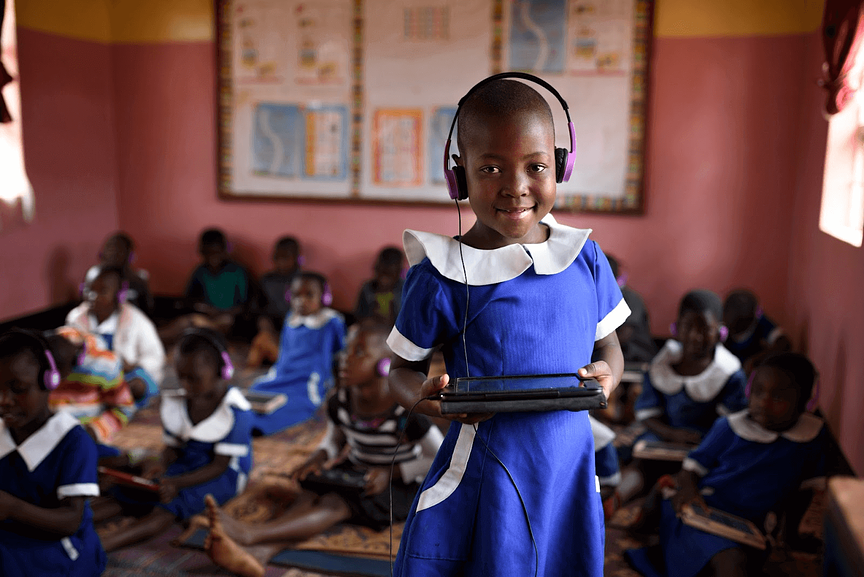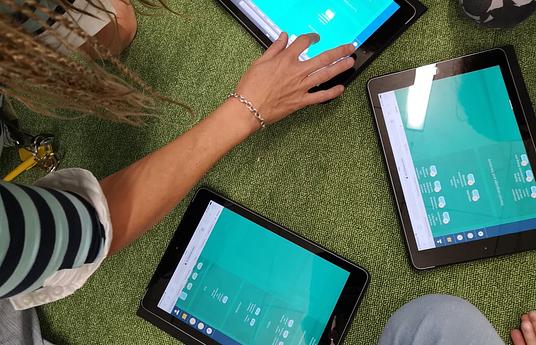Literacy and numeracy are the building blocks for all other education outcomes. These skills also improve a child’s long-term health, wealth, and social outcomes — benefits that extend to future generations. Currently, 90% of children in Sub-Saharan Africa can’t comprehend a simple written text by age 10 and the situation will only worsen as 450mm children will be born in Africa in the 2020s.
We believe child-directed, tech-enabled learning can deliver foundational literacy and numeracy skills to hundreds of millions of children. In our model:
- Students learn at their own pace using tablets that work in any setting (school, refugee camp, home) and work offline and offgrid (solar-charged)
- Adaptive learning software from onebillion (rigorously tested by 8+ RCTs) offers a full curriculum in national languages and research-based pedagogy
- Each tablet is used by an average of 5 students per day for 30-60 mins each, leading to an annual unit cost of $8 per child and declining
- Projects strengthen community ICT infrastructure, stimulating future innovations and providing renewable energy for 20+ years
This is an unprecedented moment in time when the talent, opportunity, and momentum in Africa can accelerate critical access to learning. We focus on Sub-Saharan Africa, as our solution is well-suited to overcoming critical systemic challenges including overcrowded classrooms, scarcity of instructional materials, and lack of electricity/connectivity. The significant positive results of multiple RCTs of our model have led to increasing demand for our innovation.
Our deepest engagement has been in Malawi, where we are working with the government to serve 860,000 learners in 1,450 primary schools over the next two years. Similarly, we are seeing significant demand in other countries like Sierra Leone where we are partnering with the government to expand the model to 150,000 students.
Our ground-breaking work in Malawi is creating a roadmap for other countries to follow. To learn more about our work, visit our website, sign up for our newsletter, follow us on social media, or reach out to us at info@imagineworldwide.org. (Get involved: https://www.imagineworldwide.org/get-involved/)



